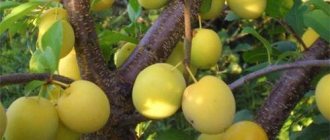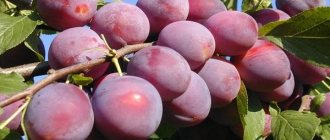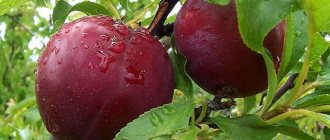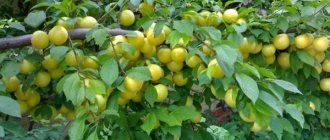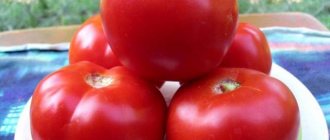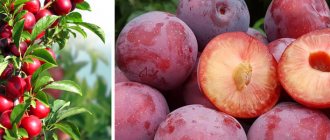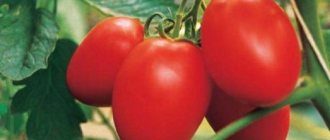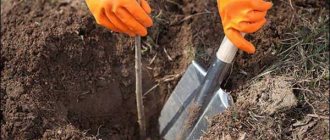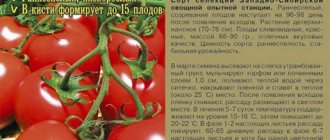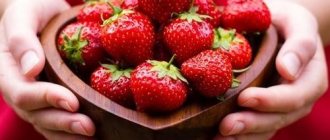Description of the variety
When choosing a cherry plum variety Gift to St. Petersburg, read its description.
The plant grows up to 2-3 meters, depending on climatic conditions. The crop has a short trunk and a wide, spreading crown of a weeping appearance. The leaf blade has a polished bright green surface. The shape of the leaves is elongated, with an uneven edge, while being curved like a boat.
The hybrid blooms with white saucer-shaped flowers. Petals with wavy-cut edges, like leaves. Each flower contains a huge number of stamens with anthers of a beautiful golden color. The plant blooms from the beginning of May, and ripening occurs already in August.
The variety was bred for the climatic conditions of the Middle Zone. The plant is patriotically called Russian plum.
Characteristics of the variety
Thanks to the characteristics of the Podarok St. Petersburg variety, the most suitable place for planting, the basics of proper care, and the necessary preventive measures to maintain the tree’s immunity are determined.
Drought resistance, frost resistance
The variety has a high level of frost resistance. Plum Gift to St. Petersburg is perfectly restored in case of damage due to fluctuations in low temperatures. In severe frosts, cherry plum can bear fruit. This is confirmed by numerous experiments with artificial frostbite.
Dry, warm climates are also well tolerated by plums. It is necessary to regularly, abundantly water the plant and create artificial shade.
Plum pollinators Gift to St. Petersburg
Cherry plum is self-sterile. It is best pollinated by the varieties Pchelnikovsky, Pavlovsky yellow, and Seedling Rocket. The flowering period is early. The crown is covered with white flowers in early May. The fruits ripen by August.
Productivity and fruiting
Plum Gift to St. Petersburg brings an annual, abundant harvest. The first fruits are harvested three years after planting. From one ten-year-old plum you get about 27 kg. A more mature tree produces up to 60 kg of sweet fruit.
Area of application of berries
Cherry plum is used in making jam, jam, and compotes. An excellent summer dessert is fresh plum variety Gift to St. Petersburg.
Resistance to diseases and pests
Plum is characterized by high resistance to plant diseases and insect damage. By performing a number of preventive measures, the fruit tree’s immunity to the negative influences of the environment increases.
Advantages and disadvantages of the variety
The plum variety Gift to St. Petersburg has a number of undeniable advantages:
- High degree of frost resistance. Good degree of adaptation to arid climate conditions.
- Regular, abundant fruiting.
- Plum is not affected by fungal diseases or insect pests.
- Sweet fruits containing a large amount of vitamins.
- Plum can be stored for a long time without losing its appearance.
Important! A distinctive feature of cherry plum is its self-sterility. This should be taken into account when choosing a place to plant a plant and placing other fruit trees around.
Plant characteristics
The crop begins to bear fruit in the third or fourth year after grafting. It has characteristic qualities that differ from other plants:
- fruiting begins after grafting in the third year;
- stable harvest;
- huge amber colored fruits;
- universal use of fruits;
- fruits with fine fibrous pulp;
- tolerates transportation and storage.
From one young plant you can collect 25-30 kilograms of fruit. The fruits have an elongated ovoid shape weighing 11-13 grams. At the same time, they are quite juicy, sweet, and exude a delicate aroma. The stone located inside the fruit is slightly pointed and weighs up to 1 gram. The peel is thin, elastic, with a slight waxy coating.
From a ten-year-old plant you can harvest up to 60 kilograms. Ripe fruits are prone to shedding, which is why it is not recommended to delay harvesting.
The culture blooms beautifully, so some gardeners prefer the plant as a decorative element in landscape design.
Distinctive features of this species and its description
In order to distinguish this cherry plum variety from others, it is necessary to understand what its features may be distinctive.
These characteristics include:
The qualities of the tree itself. The tree of this species is not tall (its estimated average height is up to three meters), and has a fairly spreading crown of a weeping shape, similar to a bowl, distinguished by a short stem. The leaves of the plant have a glossy surface, an interesting bright light green color, are shaped like a boat and are quite strongly curved. They have a wavy edge and a pointed tip.
Flowers and fruits are formed on growth shoots and bouquet branches. As a result, 2-4 saucer-shaped flowers with a small white corolla (diameter up to 16 cm) can bloom from one bud.
The flower petals are small, with a wavy-cut edge. When flowering, 15 stamens (up to 7 mm long) with beautiful yellow anthers are formed. Cups in the shape of a glass, with oval sepals, will not allow this plant to be confused with any other.
The qualities of the fruit itself. This berry has an elongated fruit, similar to an egg. Its apex is slightly pointed, and the ventral seam is almost invisible. The usual weight of each berry is up to 12 g, approximately 5.5% of which is the stone (keep in mind that it is difficult to separate from the pulp). The skin of the fruit is thin, has light subcutaneous dots, is elastic and has a slight waxy coating.
You will be pleased with the pulp of this fruit - amber-yellow, juicy, with fine fibers, having a harmonious, dessert taste, in which sweet and sour notes predominate.
This variety blooms so beautifully that many aesthetes use it as a decorative element of home gardening - as part of a living fence.
Pros and cons of cherry plum gift to St. Petersburg
The hybrid has a wide range of successful indicators. The breeding process was quite labor-intensive and long, so the plant creates worthy competition even for the best varieties:
- fruit size is larger than other crops;
- exquisite taste of fruits;
- the first harvest can be harvested in the second year after planting;
- undemanding to soil;
- excellent honey plant;
- the variety is practically disease free;
- does not require frequent watering;
- high seed germination;
- tolerates frosty winters well.
See also
Methods for propagating plums at home in summer, autumn and springRead
There are much fewer disadvantages, but they are there:
- self-sterile - to get a harvest, you need to carry out pollination;
- fruits may fall off on their own.
In addition, at the end of winter and at the beginning of spring there are sharp temperature changes. This can harm the plant's flower buds.
Features of culture
- The advantage of the cherry plum “Gift to St. Petersburg” is its regular fruiting combined with high yield.
- The vegetative part is distinguished by its high recovery ability after mechanical damage.
- The variety tolerates winters and frosts very well, but flower buds may freeze during unstable transitional weather in winter and spring.
- Cherry plum is resistant to the main diseases characteristic of plum trees - it is most susceptible to moniliosis, and is weakly affected by clasterosporium blight, aphids and moths.
- When fully ripe, the fruits quickly fall off, so they need to be collected promptly.
Growing rules
By choosing cherry plum Gift to St. Petersburg, you can be sure that you won’t have a lot of worries. The variety is practically not picky about soil conditions and has a high survival rate.
Selection of seedlings
When choosing a plant, pay attention to a seedling with a well-developed root system. It must meet certain standards:
- same year;
- smooth bark;
- roots are white when cut;
- absence of dry branches and damage;
- the length of the root system is at least 10-15 centimeters;
- lack of dryness in the rhizome.
Important: if there are diseased and damaged roots, they need to be trimmed. It is recommended to give preference to seedlings with a closed rhizome.
Choosing a landing site
When deciding where to plant the plant, you should remember that the variety does not like shade and drafts. The southern and southwestern sides of the site from the house are ideal. The building will successfully protect the plant from gusts of icy winds. Loamy soil with neutral acid promotes good fruiting.
For a hybrid variety it is preferable:
- drained soil;
- stable humidity;
- soil fertility;
- groundwater flow within a meter.
If planting involves several trees, then place the rows from east to west.
Site preparation
An important point is the preparation of the site. Planting holes, previously dug in autumn or spring, should have a depth of 70 by 70 centimeters. Keep a distance of at least three meters.
Fill in the holes:
- phosphorus fertilizer;
- potassium sulphide;
- ash;
- compost.
Important: if clay soil predominates, add a couple of buckets of peat or sand.
As a result, the soil will easily allow moisture and air to pass through, which will have a good effect on the seedling’s survival in a new place. Then fill the indentations generously with water.
Step by step process
By following the recommendations, you can safely grow a hybrid. Step-by-step instructions will help the plant take root well in the soil:
- in the center of the planting hole, prepared in advance, make a mound;
- Place the roots of the plant on the tubercle;
- the root collar of the crop should be at the level of the soil surface;
- fill the hole and press down the soil to improve contact with the rhizome;
- form watering holes around the planting.
Drive a stake 1 meter high nearby, to which you will subsequently attach the seedling. Planting ends with conscientious watering.
See also
Description and characteristics of cherry plum variety Zlato Scythians, pollinators and cultivationRead
Planting and preparatory work
The hybrid variety of cherry plum should be planted in a sunny area, protected from drafts. It is best to choose a southwestern or southern area in the garden. It is advisable that the tree is protected by a building wall or fence.
A suitable place for cherry plum is a dry and sunny area under the protection of a solid fence.
This variety is not picky about soil quality, but on loamy soils with neutral acidity, trees grow and bear fruit better. Cherry plum will not grow in wetlands. Groundwater should not flow too high to the surface.
Preparing the site
fertilizers are applied to the ground even before planting the tree .
At the site of future planting, you can grow mustard a year earlier and dig up its tops, enriching the soil with natural fertilizer.
- It is better to plant seedlings in the spring, and the holes should be dug in the fall or two weeks before planting.
- The dimensions of the planting hole are 70x70 cm .
Expanded clay, gravel, and broken bricks are poured into the bottom of the hole; this layer will serve as drainage and prevent rotting of the roots.
The minimum thickness of the drainage layer is 10 cm.
Turf soil mixed with the following components is added to the hole
- superphosphate – 0.3 kg;
- potassium sulphide – 0.04 kg;
- compost - 1 bucket. In the fall you can use a fresh composition, and in the spring you must use a rotted one.
If the soil on the site is clayey, pour 1-2 buckets of peat or sand into the planting hole. On a sandy area, add 1 bucket of turf soil into the hole.
Landing technology
If the seedling has an open root system, before planting in the ground, its roots are soaked in water with the addition of a growth stimulating agent.
The roots of the seedling are soaked in a stimulant solution 1–2 hours before planting.
When purchasing a seedling with closed roots, water it abundantly. The landing process is as follows:
- a support column is driven into the center of the hole;
- A seedling is placed strictly vertically on a mound of earth in a planting hole. Make sure that the root collar of the hybrid is 5–6 cm above the ground;
- the roots are covered with earth, carefully pressing the soil with your hands;
- the seedling is fixed to a support peg;
The garter should not pinch the trunk of the seedling. It is better to use a special tape that stretches and decomposes over time.
- 2-3 buckets of water are poured into the tree trunk circle ;
- The hole must be mulched. To do this, use straw, sawdust, peat or tree chips.
If several seedlings of the same variety are planted, at least 2.5 m , row spacing should be over 3 m .
Pollinators
The culture is self-fertile, so it cannot be done without additional pollination.
The following pollinators are excellent for obtaining fruits:
- cherry plum variety Pavlovskaya Yellow;
- Pchelnikovskaya;
- Rocket seedling.
Crops are planted from the main hybrid at a distance of 3 meters.
Reviews
Elena: “We have been growing cherry plum Podarok St. Petersburg for 10 years, during all this time it has never frozen and has not left us for harvest. There are always a lot of berries and, accordingly, preparations for the winter. Next to it grows the Pioneer cherry plum, which pollinates our Gift. Our dacha is located on the very Gulf of Finland, where there are often cold winds and bad weather, but the cherry plum has never let us down, it’s an excellent gift for St. Petersburg residents.”
Evgeniy Sergeevich: “I live in the Yaroslavl region, where the weather can be very unfavorable for growing southern plants, but for cherry plum “Gift to St. Petersburg” our weather does not seem extreme. For the fifth year now, the tree has been growing well, and we have received two harvests. The fruits are smooth, tasty, beautiful, if this continues, I’ll buy another cherry plum of the same variety.”
Ekaterina: “I didn’t think that we could grow juicy cherry plum in the Vologda region, but the Gift to St. Petersburg exceeded all expectations. Having bought a seedling on advice, I have been getting a stable harvest for five years now, although I had to buy another cherry plum as a pollinator for the Pavlovskaya variety.”
Further care of the crop
The plant requires proper and timely care, which consists of watering, pruning and disease prevention.
Watering and fertilizing
The hybrid is quite moisture-loving, so it needs good moisture. It is enough to water the plant thoroughly every summer month:
- 1st time - after flowering - in June;
- 2nd time - when the bone is formed - in July;
- 3rd time - the fruits gain color - in July.
You need to pour at least five buckets under the plant.
Trimming
After planting the crop, leave five skeletal branches on it. Then shorten them to half a meter and stretch them with ties. In winter, this will help cover the branches with snow, which will save them from freezing. At the beginning of summer, it is recommended to shorten the branches by 20 centimeters. This will provoke the appearance of young shoots from the lateral buds, which will bear fruit.
Preparing the plant for winter
In late autumn, whitewash the plant with a lime solution to protect the trunk from rodents. Despite the fact that the variety normally tolerates harsh winters, it is initially better to cover young plants with special covering material or spruce branches. You cannot mulch the hole with dry herbaceous plants, as they may contain pests.
How to properly care for a cherry plum hybrid
Since cherry plum of this variety is not a fastidious crop, you do not have to spend a lot of effort and energy caring for it. Any soil will suit it, but the amount of harvest will depend directly on your attention.
Pruning is a mandatory procedure that should be carried out in early spring. This will make it easier for you to control the crown and, therefore, the expected harvest.
“Gift to St. Petersburg” is distinguished by its stability in yield. Its berries always have excellent taste and presentation.
Important! The only drawback of the variety is the shedding of berries at technical ripeness, as well as damage to the buds due to a sharp change in temperature in the spring.
Choose a sunny area for the seedlings on the south or southwest side of the garden. The sun's rays promote abundant ripening of berries. It’s good if there is a building or fence on the north side of the trees, this will be reliable protection from cold winds.
Despite the fact that any soil can be suitable for the variety, loam with a neutral reaction is preferable. If groundwater lies close, a small elevation should be provided for planting cherry plum.
The planting hole is prepared in advance, and fertilizers are applied two weeks before planting. The dimensions of the holes must correspond to the parameters 70X70 cm. Fertilizers are added to the hole:
- superphosphate – 250-300 g;
- potassium sulphide – up to 50 g;
- compost up to 10 kg, if in the fall for spring planting, then you can add fresh compost, and in the spring only rotted compost.
All components are mixed well, turf soil and sand are added to them. Such a fertile and fertilized mixture will allow the seedling to quickly grow.
Methods of controlling diseases and pests
The hybrid has a large number of pests. The main measures to combat them and diseases include the following:
- destroy all plant debris without leaving them in the holes for the winter;
- remove and burn diseased shoots and fruits;
- in case of fungal infections, cut off the branches and treat the sections with copper sulfate or garden pitch;
- clean the trunk of old dead bark.
Don't forget to collect and destroy fallen leaves and fruits.
Harvesting and storage
Ripe fruits are harvested in several stages, as they ripen unevenly. To preserve fruits and not spoil, they should be stored in boxes with air holes.
The crop can be stored for up to three weeks at temperatures up to +5 °C.
The culture is very popular among gardeners. And this is not only because the plant is unpretentious in care and easily tolerates winter. The fruits of the hybrid are quite tasty and healthy. They make a wonderful dessert, fresh or canned.
